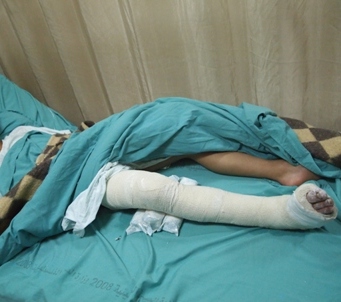Tag: Video
-
Residents of Beit Hanina stand against eviction
14th June 2013 | International Solidarity Movement, RamallahTeam | Beit Hanina, Occupied Palestine On Monday, June 10, a group of fifty-three Palestinians living in the Beit Hanina neighborhood of East Jerusalem received eviction orders from the Israeli authorities. These families have been living in Beit Hanina for over 40 years and for nearly the past…
-
Updated: 13 year-old boy shot at by settlers, tortured by soldiers, denied medical attention
19th May 2013 | International Solidarity Movement, Team Nablus | Qaryut, Occupied Palestine UPDATED: The 13-year-old Qaryut boy attacked by settlers on 16 May completed an operation on his lower leg and foot on Friday and has since been released to recover at home. He also provided a full account of his attack and the…

